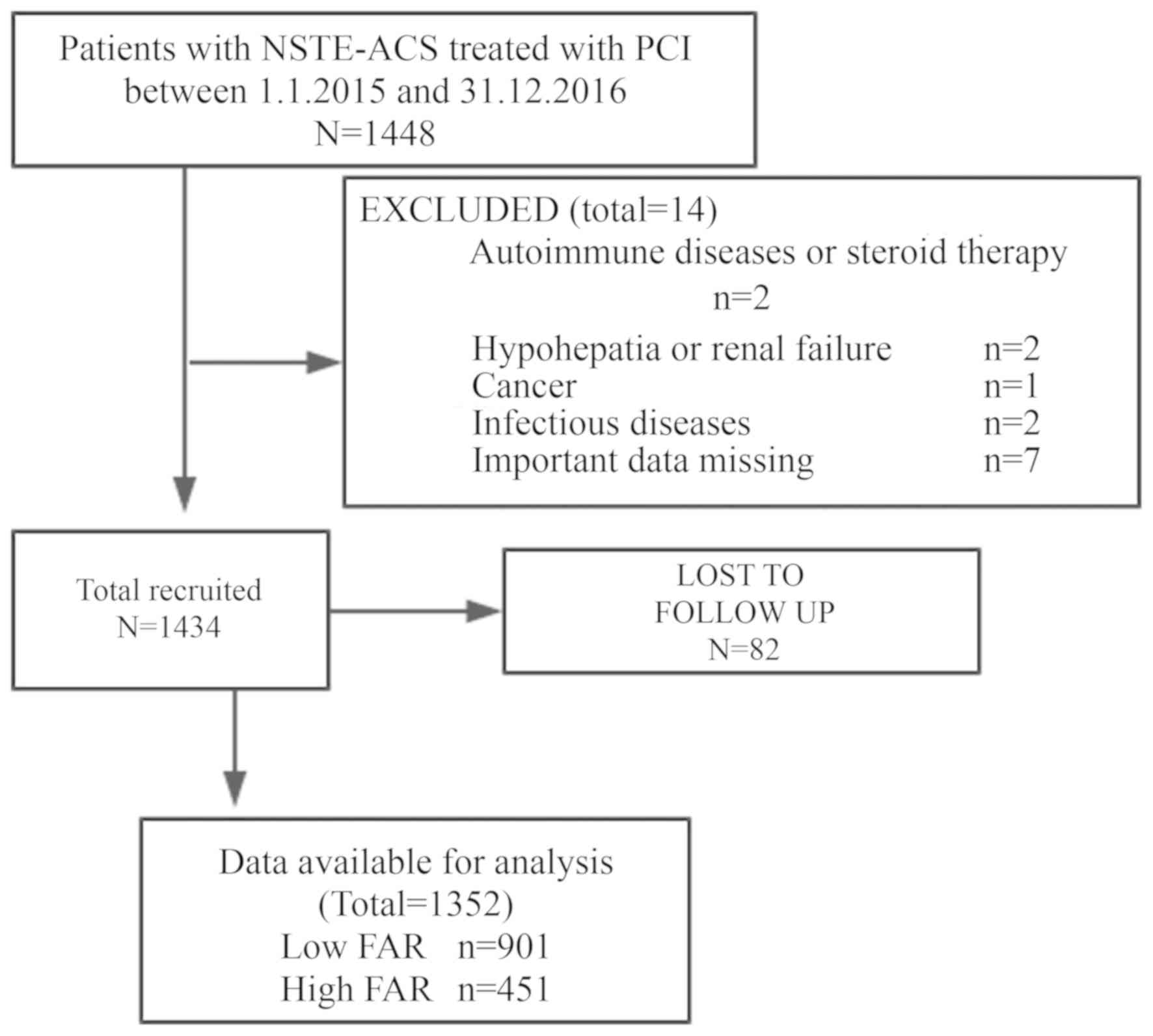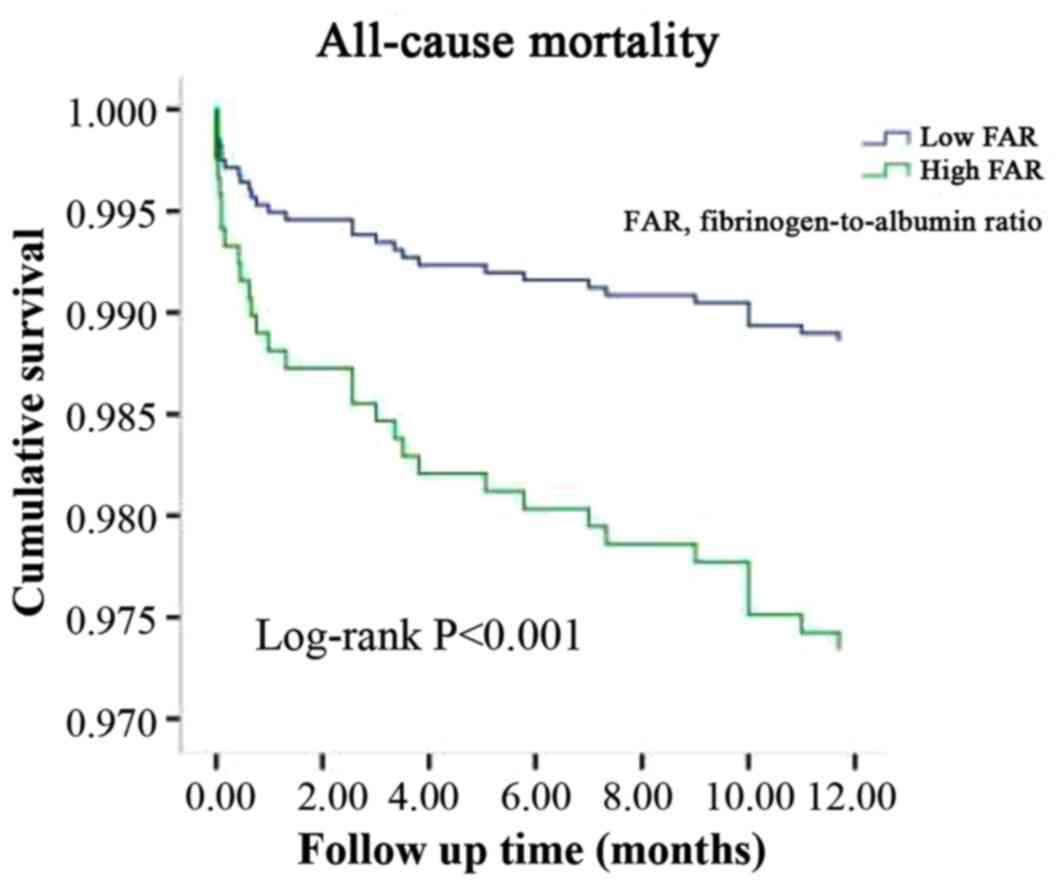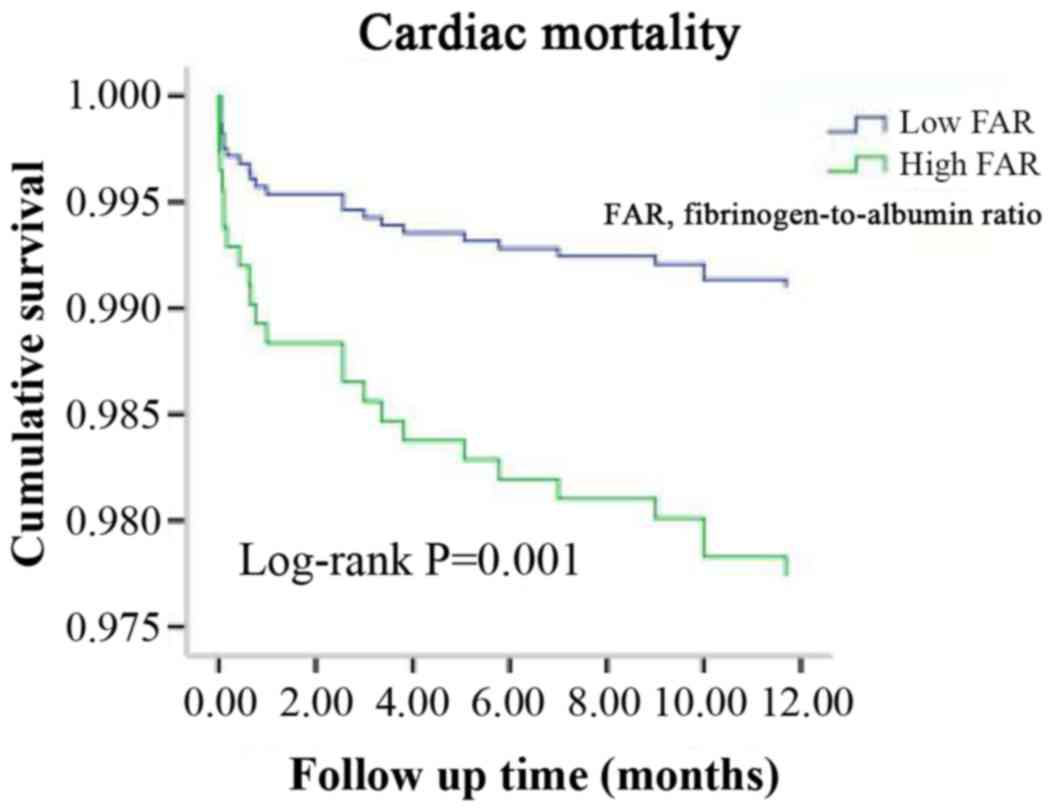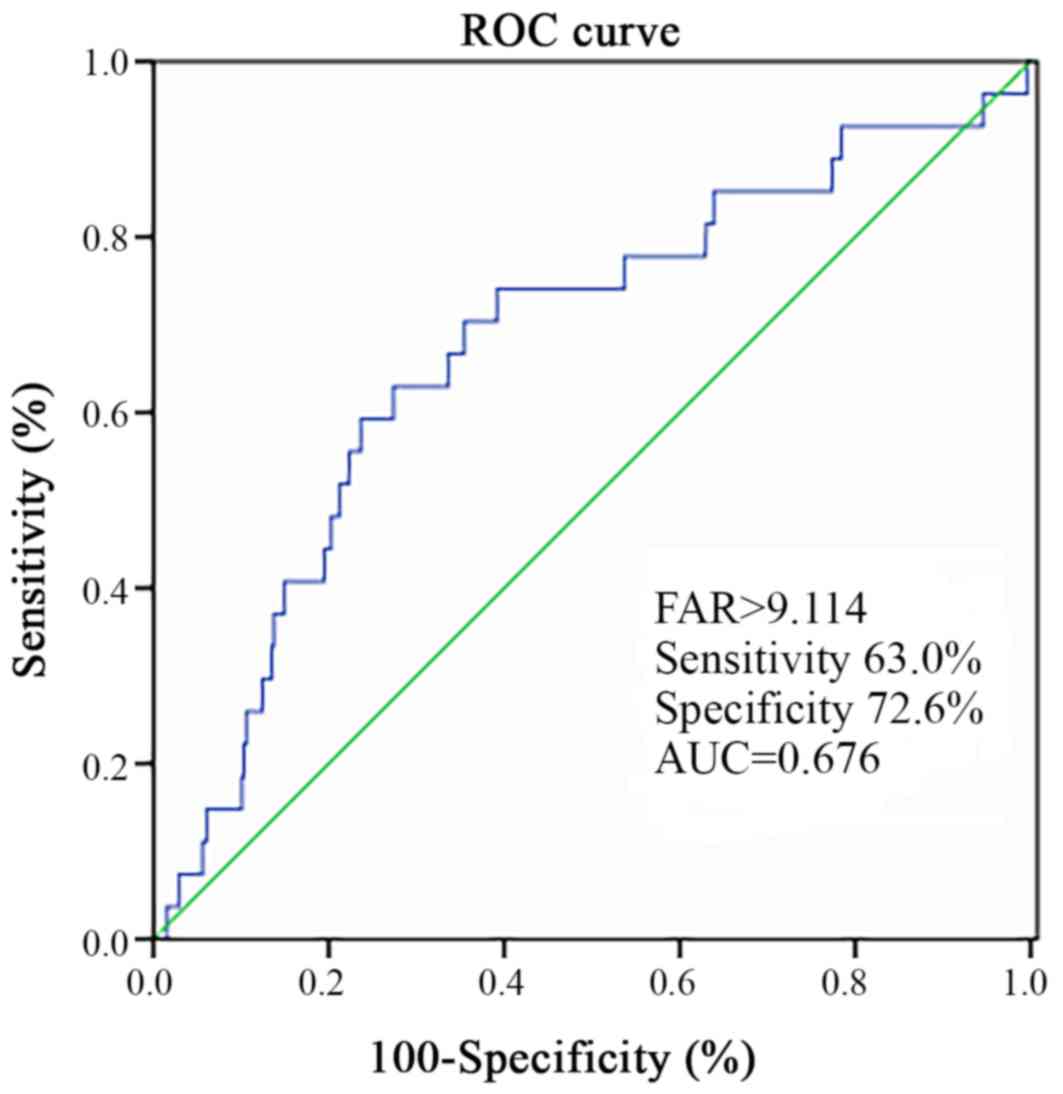|
1
|
GBD 2016 DALYs and HALE Collaborators:
Global, regional, and national disability-adjusted life-years
(DALYs) for 333 diseases and injuries and healthy life expectancy
(HALE) for 195 countries and territories, 1990–2016, . A systematic
analysis for the Global Burden of Disease Study 2016. Lancet.
390:1260–1344. 2017. View Article : Google Scholar : PubMed/NCBI
|
|
2
|
Gao R, Patel A, Gao W, Hu D, Huang D, Kong
L, Qi W, Wu Y, Yang Y, Harris P, et al: Prospective observational
study of acute coronary syndromes in China: Practice patterns and
outcomes. Heart. 94:554–560. 2008. View Article : Google Scholar : PubMed/NCBI
|
|
3
|
Libby P: Inflammation in atherosclerosis.
Arterioscler Thromb Vasc Biol. 32:2045–2051. 2012. View Article : Google Scholar : PubMed/NCBI
|
|
4
|
Ahmed MS, Jadhav AB, Hassan A and Meng QH:
Acute phase reactants as novel predictors of cardiovascular
disease. ISRN Inflamm. 2012:9534612012. View Article : Google Scholar : PubMed/NCBI
|
|
5
|
Emerging Risk Factors Collaboration,
Kaptoge S, Di Angelantonio E, Pennells L, Wood AM, White IR, Gao P,
Walker M, Thompson A, Sarwar N, et al: C-reactive protein,
fibrinogen, and cardiovascular disease prediction. N Engl J Med.
367:1310–1320. 2012. View Article : Google Scholar : PubMed/NCBI
|
|
6
|
Mayer FJ, Gruenberger D, Schillinger M,
Mannhalter C, Minar E, Koppensteiner R, Arbesú I, Niessner A and
Hoke M: Prognostic value of neutrophils in patients with
asymptomatic carotid artery disease. Atherosclerosis. 231:274–280.
2013. View Article : Google Scholar : PubMed/NCBI
|
|
7
|
Iijima R, Ndrepepa G, Mehilli J, Bruskina
O, Schulz S, Schömig A and Kastrati A: Relationship between
platelet count and 30-day clinical outcomes after percutaneous
coronary interventions. Pooled analysis of four ISAR trials. Thromb
Haemost. 98:852–857. 2007. View Article : Google Scholar : PubMed/NCBI
|
|
8
|
Jensen T, Kierulf P, Sandset PM,
Klingenberg O, Joø GB, Godal HC and Skjønsberg OH: Fibrinogen and
fibrin induce synthesis of proinflammatory cytokines from isolated
peripheral blood mononuclear cells. Thromb Haemost. 97:822–829.
2007. View Article : Google Scholar : PubMed/NCBI
|
|
9
|
Kurtul A, Murat SN, Yarlioglues M, Duran
M, Ocek AH, Koseoglu C, Celık IE, Kilic A and Aksoy O: Usefulness
of serum albumin concentration to predict high coronary SYNTAX
score and in-hospital mortality in patients with acute coronary
syndrome. Angiology. 67:34–40. 2016. View Article : Google Scholar : PubMed/NCBI
|
|
10
|
Duffy BK, Gurm HS, Rajagopal V, Gupta R,
Ellis SG and Bhatt DL: Usefulness of an elevated neutrophil to
lymphocyte ratio in predicting long-term mortality after
percutaneous coronary intervention. Am J Cardiol. 97:993–996. 2006.
View Article : Google Scholar : PubMed/NCBI
|
|
11
|
Tan Z, Zhang M, Han Q, Wen J, Luo K, Lin
P, Zhang L, Yang H and Fu J: A novel blood tool of cancer prognosis
in esophareal squamous cell carcinoma: The Fibrinogen/Albumin
Ratio. J Cancer. 8:1025–1029. 2017. View Article : Google Scholar : PubMed/NCBI
|
|
12
|
Hwang KT, Chung JK, Roh EY, Kim J, Oh S,
Kim YA, Rhu J and Kim S: Prognostic influence of preoperative
fibrinogen to albumin ratio for breast cancer. J Breast Cancer.
20:254–263. 2017. View Article : Google Scholar : PubMed/NCBI
|
|
13
|
Chan D, Lawson L and Kunadian V:
Management of older patients presenting with non-ST-elevation acute
coronary syndrome. EuroIntervention. 14:e258–e260. 2018. View Article : Google Scholar : PubMed/NCBI
|
|
14
|
2012 Writing Committee Members, Jneid H,
Anderson JL, Wright RS, Adams CD, Bridges CR, Casey DE Jr, Ettinger
SM, Fesmire FM, Ganiats TG, et al: 2012 ACCF/AHA focused update of
the guideline for the management of patients with unstable
anginan/Non-ST-elevation myocardial infarction (updating the 2007
guideline and replacing the 2011 focused update): A report of the
American College of Cardiology Foundation/American Heart
Association Task Force on practice guidelines. Circulation.
126:875–910. 2012. View Article : Google Scholar : PubMed/NCBI
|
|
15
|
Karahan O, Acet H, Ertaş F, Tezcan O,
Çalişkan A, Demir M, Kaya AF, Demirtaş S, Çevik MU and Yavuz C: The
relationship between fibrinogen to albumin ratio and severity of
coronary artery disease in patients with STEMI. Am J Emerg Med.
34:1037–1042. 2016. View Article : Google Scholar : PubMed/NCBI
|
|
16
|
Stone MC and Thorp JM: Plasma fibrinogen-a
major coronary risk factor. J R Coll Gen Pract. 35:565–569.
1985.PubMed/NCBI
|
|
17
|
Wilhelmsen L, Svärdsudd K, Korsan-Bengtsen
K, Larsson B, Welin L and Tibblin G: Fibrinogen as a risk factor
for stroke and myocardial infarction. N Engl J Med. 311:501–505.
1984. View Article : Google Scholar : PubMed/NCBI
|
|
18
|
Hoff HF, Heideman CL, Jackson RL, Bayardo
RJ, Kim HS and Gotto AM Jr: Localization patterns of plasma
apolipoproteins in human atherosclerotic lesions. Circ Res.
37:72–79. 1975. View Article : Google Scholar : PubMed/NCBI
|
|
19
|
Sadoshima S and Tanaka K: Fibrinogen and
low density lipoprotein in the development of cerebral
atherosclerosis. Atherosclerosis. 34:93–103. 1979. View Article : Google Scholar : PubMed/NCBI
|
|
20
|
Mahmud E, Behnamfar O, Lin F, Reeves R,
Patel M and Ang L: Elevated serum fibrinogen is associated with
12-month major adverse cardiovascular events following percutaneous
coronary intervention. J Am Coll Cardiol. 67:2556–2557. 2016.
View Article : Google Scholar : PubMed/NCBI
|
|
21
|
Ang L, Behnamfar O, Palakodeti S, Lin F,
Pourdjabbar A, Patel MP, Reeves RR and Mahmud E: Elevated baseline
serum fibrinogen: Effect on 2-year major adverse cardiovascular
events following percutaneous coronary intervention. J Am Heart
Assoc. 6:2017. View Article : Google Scholar : PubMed/NCBI
|
|
22
|
Lowe GD, Fowkes FG, Dawes J, Donnan PT,
Lennie SE and Housley E: Blood viscosity, fibrinogen, and
activation of coagulation and leukocytes in peripheral arterial
disease and the normal population in the Edinburgh Artery Study.
Circulation. 87:1915–1920. 1993. View Article : Google Scholar : PubMed/NCBI
|
|
23
|
Chien SC, Chen CY, Leu HB, Su CH, Yin WH,
Tseng WK, Wu YW, Lin TH, Chang KC, Wang JH, et al: Association of
low serum albumin concentration and adverse cardiovascular events
in stable coronary heart disease. Int J Cardiol. 241:1–5. 2017.
View Article : Google Scholar : PubMed/NCBI
|
|
24
|
Wada H, Dohi T, Miyauchi K, Shitara J,
Endo H, Doi S, Naito R, Konishi H, Tsuboi S, Ogita M, et al: Impact
of serum albumin levels on long-term outcomes in patients
undergoing percutaneous coronary intervention. Heart Vessels.
32:1085–1092. 2017. View Article : Google Scholar : PubMed/NCBI
|
|
25
|
Roche M, Rondeau P, Singh NR, Tarnus E and
Bourdon E: The antioxidant properties of serum albumin. FEBS Lett.
582:1783–1787. 2008. View Article : Google Scholar : PubMed/NCBI
|
|
26
|
Nicholson JP, Wolmarans MR and Park GR:
The role of albumin in critical illness. Br J Anaesth. 85:599–610.
2000. View Article : Google Scholar : PubMed/NCBI
|
|
27
|
Don BR and Kaysen G: Serum albumin:
Relationship to inflammation and nutrition. Semin Dial. 17:432–437.
2004. View Article : Google Scholar : PubMed/NCBI
|
|
28
|
Odamaki M, Kato A, Takita T, Furuhashi M,
Maruyama Y, Yonemura K and Hishida A: Role of soluble receptors for
tumor necrosis factor alpha in the development of hypoalbuminemia
in hemodialysis patients. Am J Nephrol. 22:73–80. 2002. View Article : Google Scholar : PubMed/NCBI
|
|
29
|
Kim KJ, Yang WS, Kim SB, Lee SK and Park
JS: Fibrinogen and fibrinolytic activity in CAPD patients with
atherosclerosis and its correlation with serum albumin. Perit Dial
Int. 17:157–161. 1997.PubMed/NCBI
|
|
30
|
Kim SB, Chi HS, Park JS, Hong CD and Yang
WS: Effect of increasing serum albumin on plasma D-dimer, von
Willebrand factor, and platelet aggregation in CAPD patients. Am J
Kidney Dis. 33:312–317. 1999. View Article : Google Scholar : PubMed/NCBI
|
|
31
|
Galanakis DK: Anticoagulant albumin
fragments that bind to fibrinogen/fibrin: Possible implications.
Semin Thromb Hemost. 18:44–52. 1992. View Article : Google Scholar : PubMed/NCBI
|
|
32
|
Rasmussen KC, Højskov M, Johansson PI,
Kridina I, Kistorp T, Salling L, Nielsen HB, Ruhnau B, Pedersen T
and Secher NH: Impact of albumin on coagulation competence and
hemorrhage during major surgery: A randomized controlled trial.
Medicine (Baltimore). 95:e27202016. View Article : Google Scholar : PubMed/NCBI
|
|
33
|
Xiao L, Jia Y, Wang X and Huang H: The
impact of preoperative fibrinogen-albumin ratio on mortality in
patients with acute ST-segment elevation myocardial infarction
undergoing primary percutaneous coronary intervention. Clin Chim
Acta. 493:8–13. 2019. View Article : Google Scholar : PubMed/NCBI
|
|
34
|
Smith SC, Dove JT, Jacobs AK, Kennedy JW,
Kereiakes D, Kern MJ, Kuntz RE, Popma JJ, Schaff HV, Williams DO,
et al: ACC/AHA guidelines for percutaneous coronary intervention
(revision of the 1993 PTCA guidelines)-executive summary: A report
of the American College of Cardiology/American Heart Association
task force on practice guidelines (Committee to revise the 1993
guidelines for percutaneous transluminal coronary angioplasty)
endorsed by the Society for Cardiac Angiography and Interventions.
Circulation. 103:3019–3041. 2001. View Article : Google Scholar : PubMed/NCBI
|


















